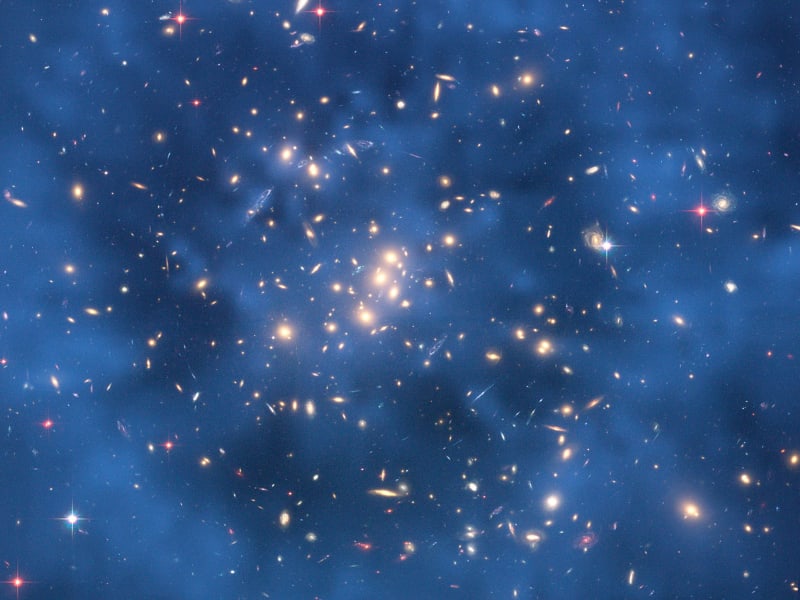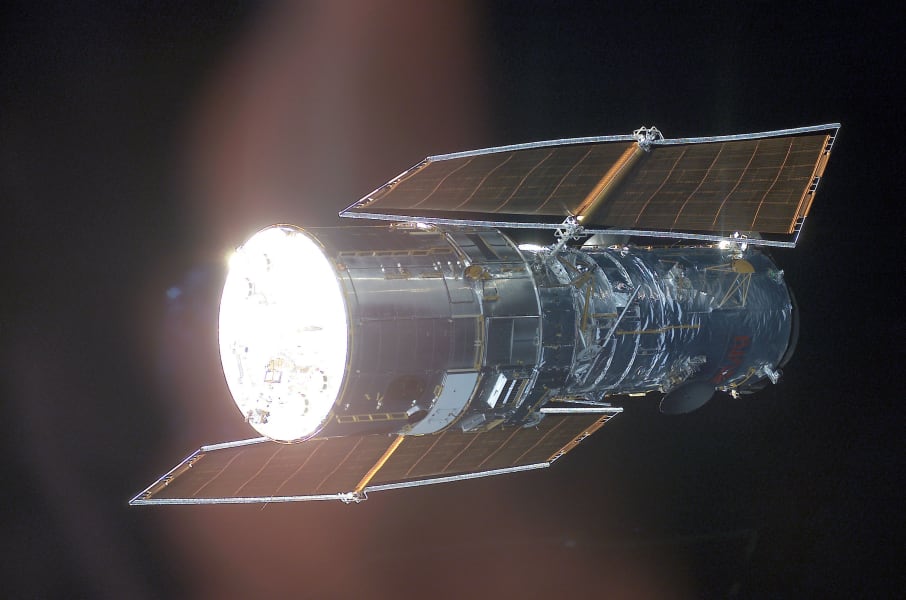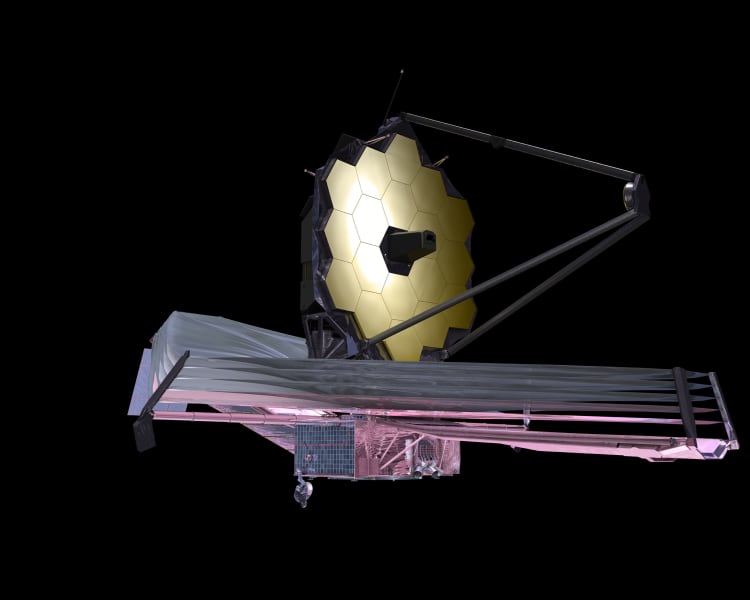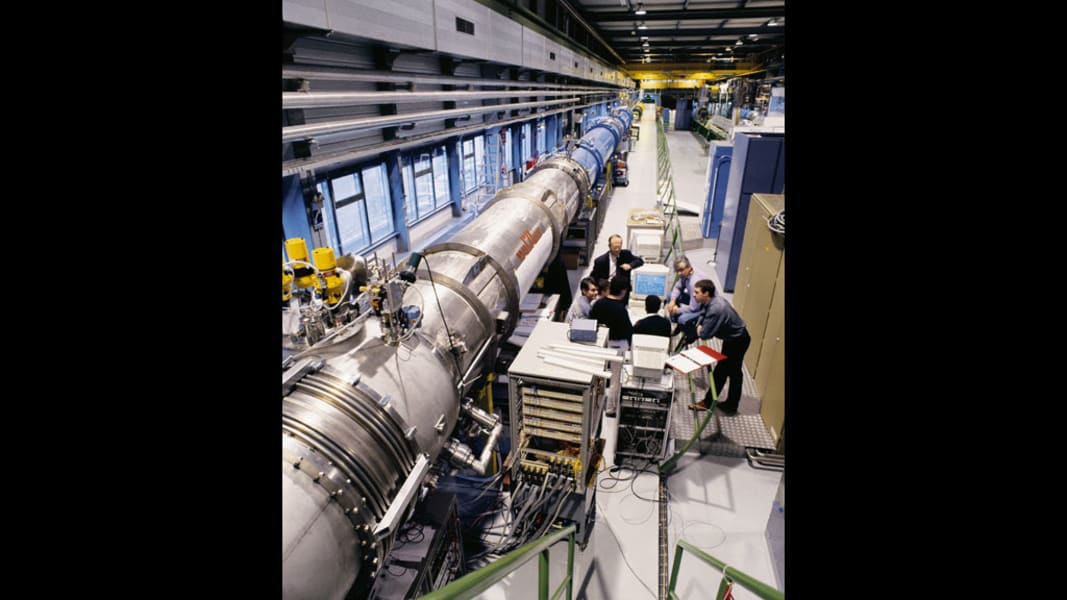Share


1 of 8
Science on the big scale and the small scale is important for understanding the structure of the universe. The Hubble Space Telescope is looking for indications of dark matter in star clusters, while particle experiments are also hunting down this mysterious substance. courtesy nasa
This is what the Hubble Space Telescope looks like. NASA/Getty Images
The James Webb Space Telescope, shown in this artist's depiction, would be even more powerful than the Hubble Space Telescope, and may enhance our understanding of enigmatic substances called dark matter and dark energy. NASA
This graphic shows the evolution of the universe, combining the expansion history from supernova measurements with findings from NASA's WMAP satellite, launched in 2001. Dark energy is thought to be responsible for the acceleration of the universe's expansion. NASA / WMAP Science Team
At the Large Hadron Collider at CERN, scientists smash particles into each other hoping to draw other, as-yet-unseen particles into existence, and could also find evidence of dark matter. The LHC is officially shut down for about two years while it receives maintenance and upgrades. Barcrfot Media /Landov
Michael Faraday used the principles of electricity to develop the electric motor, showing that pure science leads to technological innovations, in the 1800s. Hulton Archive/Getty Images
The World Wide Web was an unexpected invention that arose at CERN, to help physicists communicate better. Here, Tim Berners-Lee, who came up with it, demonstrates the NeXT computer on which he developed the Web. SEBASTIAN DERUNGS/AFP/Getty Images
Scientists at the Large Hadron Collider detected a particle resembling the theorized Higgs boson, and announced this breakthrough in 2012. We may learn of amazing practical applications of the particle physics that goes on at the LHC, but no one knows what those will be. CERN















